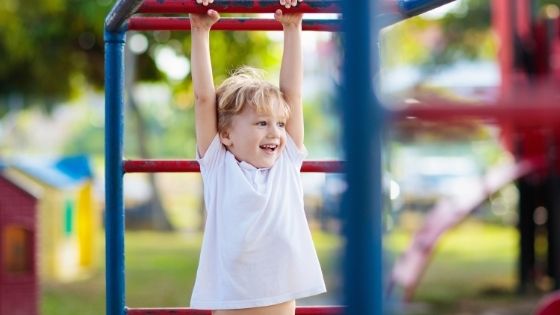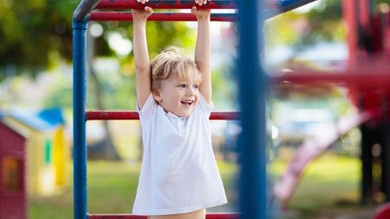
It’s often dismissed that playing doesn’t have value beyond keeping kids entertained. However, did you know that playtime and physical activity are an important part of learning as well as keeping children healthy? Especially having a place where kids can jump and climb teaches lessons that aren’t as common in activities that simply involve running around. To better prove our point, allow us to show you some of the many ways climbing affects a child’s development.
Physical Skills
Climbing plays a large role in developing a child’s motor skills. It provides greater challenges that require a kid to exercise their ability to coordinate and balance their body while additionally honing their spatial and directional awareness as they observe their surroundings and figure out how to climb further. Unlike running or walking (skills that have become second nature), climbing requires active thought to chart a path while handling different levels, inclines, and distances. Eventually, children learn how to adapt to their surroundings, set goals for themselves, and encourages determination to overcome challenges.
Problem-Solving
As alluded to in the previous topic, problem-solving is one of the many ways climbing affects a child’s development. If you’ve ever gone rock climbing, think back to how you had to often stop and consider your options before climbing higher. This is because our minds treat climbing structures as problems we need to solve—the same cognitive functions we use to solve puzzles or riddles. Additionally, once a child does finally reach the top, they then have to reverse engineer the process and figure out how to get themselves back down.
Social Skills
Climbing is rarely a solitary experience. When other kids their age are around and climbing on the same equipment, your child inevitably must begin to communicate and cooperate to help others climb and navigate without interfering with one another. These cultivate skills in teaching, listening, and communicating. If your child hasn’t done much climbing before, they can learn from more experienced kids or vice versa. It’s a natural way to put your child in a position where they must learn to communicate.
Of course, to get the most out of their climbing experience, make sure the area they play in is safe. In particular, it’s inevitable that kids will fall at one point or another. Ensure the surfacing of a playground is sufficient before kids start climbing. If it’s loose-fill, refill the surfacing. If the ground is rubber, make sure you have a rubber playground surface repair kit on hand to address any issues. The shock absorption of such materials will prevent any serious injuries.

